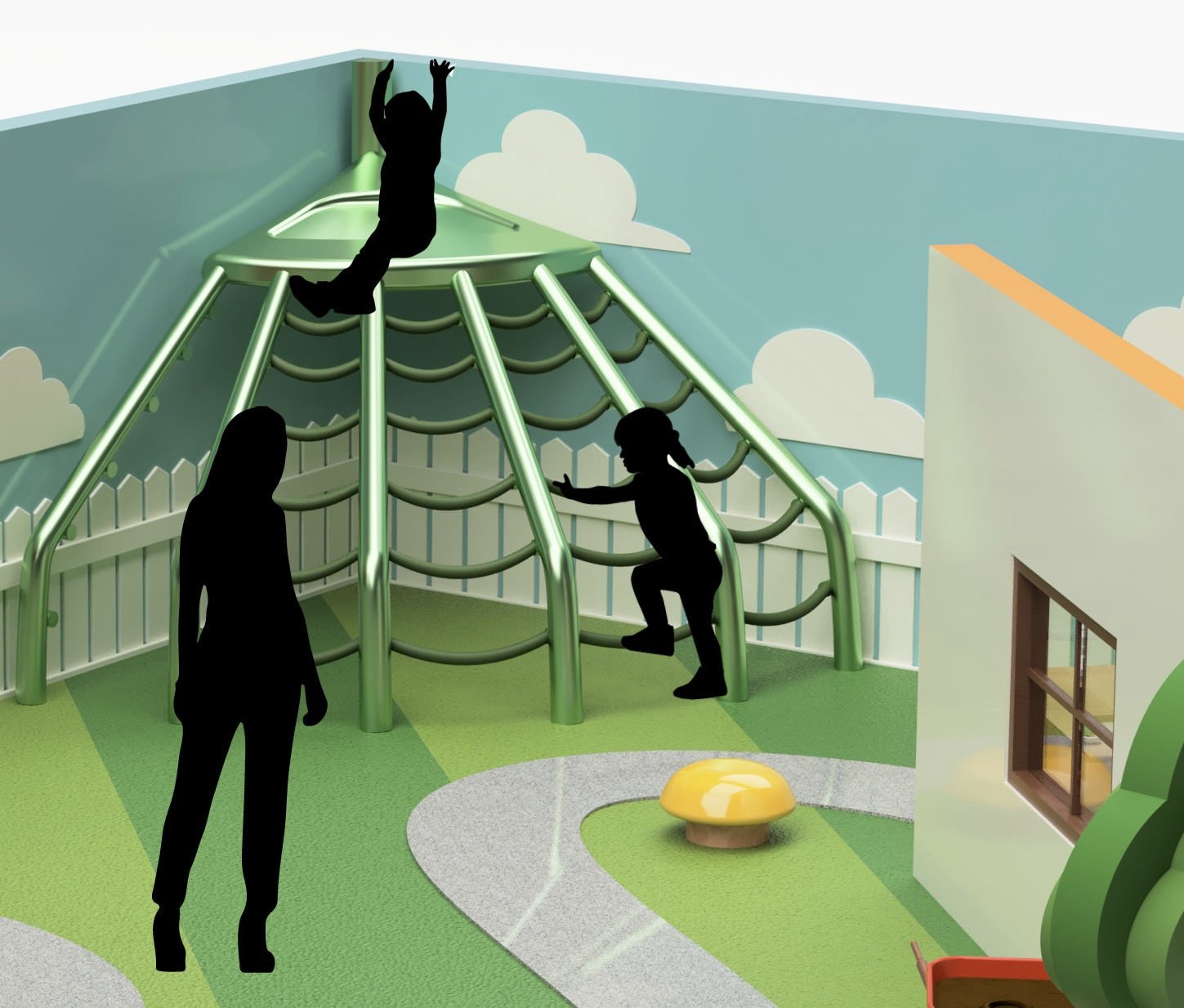Hero’s Journey
Exhibit Design
Skills Utilized
Autodesk Fusion 360, Adobe Illustrator, & Adobe Photoshop
Mission Objective
In a team of four, design a new interactive exhibit for the Strong Museum of Play's Reading Adventureland area that follows their theme of children's literature.
HERO’S JOURNEY
The exhibit aims to teach children aged five through ten-year-olds about the Hero's Journey narrative through the framework of finding adventure in their backyard.
Garden Playground
The backyard can be big and scary, but as a hero you will descend into this new world and navigate through your new surrounding.
Conquer the playground by climbing up the rake jungle gym to the top! Sit at the top and look out over the entire backyard.
The ropes use leather fabric to aid with grip and climbing. The structure is made out of powder coated steel and has an opening to allow parents or guardians to retrieve their child if they’re playing beneath the gym.
Rake Jungle Gym
The watering can activity allows kids to pretend to be plant and be watered. A swish of air will blow fabric streamers and play the sound of water running.
The structure would also be made of powder coated steel.
Watering Can
The Strong National Museum of Play
Located in Rochester, NY, the Strong Museum houses the world’s largest and most comprehensive collection of historical materials related to play.
What is the Hero’s Journey?
The hero journey is a classic, popular narrative for adventure stories of all levels. It’s present in historical classics to children’s picture books. It is also easy to simplify and explain at multiple levels of complexity.
There are three main stages to the Hero’s Journey
1st stage: Departure
2nd stage: Initiation
3rd stage: Return
Floorplan
New Floorplan
Departure
“Real World” setting → Pretend Kitchen
Call to adventure → Open back door
Initiation
Roads of Trials → Yard of obstacles
Achievement of Goal → Going through all of the backyard areas
Return → Celebration
Old Floorplan
Nonsense House
Located inside of Reading Adventure, the Nonsense house is an exhibit centered around wordplay and rhyming. However, the theme of the exhibit is confusing and not cohesive and it is filled with tired interactives. Due to the claustrophobic atmosphere, the visitors leave feeling over-stimulated.
PROBLEM AREA
Targeted Age Group
Our exhibit’s intended audience is aimed at five to ten-year-olds.
At this age group, kids are:
beginning to understand the structures of stories
making their own creative narratives
clearly identifying major elements of stories like plot, problem, and resolution
Types of Play
Jean Piaget’s theory of cognitive development recognizes that play is essential to the advancement of a child’s intelligence. There are four stages to his theory: Sensorimotor, Preoperational, Concrete Operational, and Formal Operational.
Within each stage of play, there are additional types of play that where children will engage in different activities.
Examples:
Pretend Play: Children come up with their own imaginary scenarios that allows them to explore their curiosity, develop their language skills, and express themselves.
Physical Play: Encourages kids to be active and build their gross and fine motor skills. Climbing, running, jumping, and skipping.
https://www.gowriensw.com.au/thought-leadership/types-of-play-for-early-childhood-development
Moodboard
Earthy, Natural, Bright Color Palette
Ideation
Idea for an interactive activity where children would hear sounds coming from the garden and would open up doors and “boxes” to reveal an animal and facts about them.
Idea for an interactive activity where children physically play with garden related equipment to encourage curiosity and build self confidence.
Refinement
Orthographic
I used large paper to create a full scale orthographic drawing of the Watering Can and this helped to visualize the Watering Can in physical space.
Color Palette
Drawing from our moodboard, the color palette for the exhibit is earthy and natural with bright pops of colors.
3D Models
Then I modeled my structures in Autodesk Fusion and also created an additional mushroom stump that children can use as physical obstacles to jump over or sit on.
Scroll back to the top to read about the finished interactive again!
THANK YOU!
























